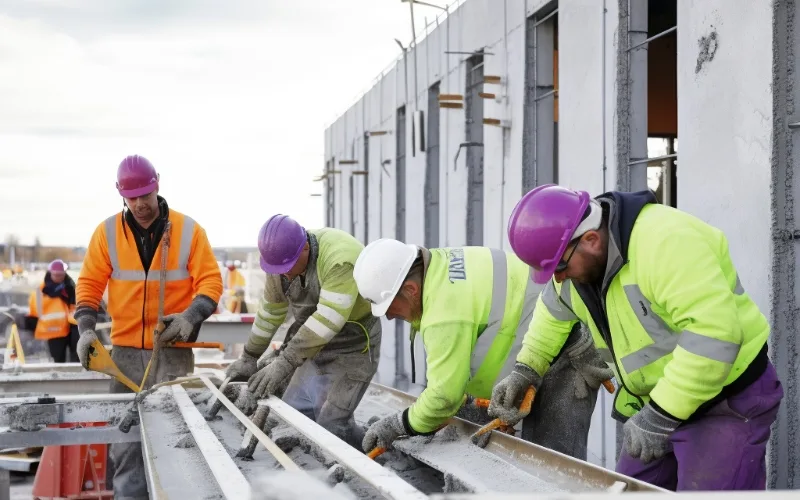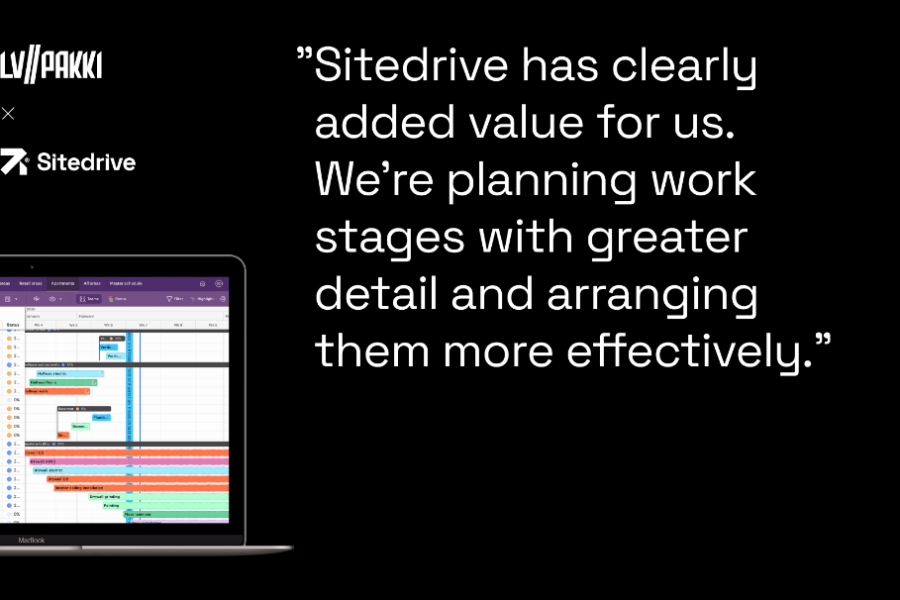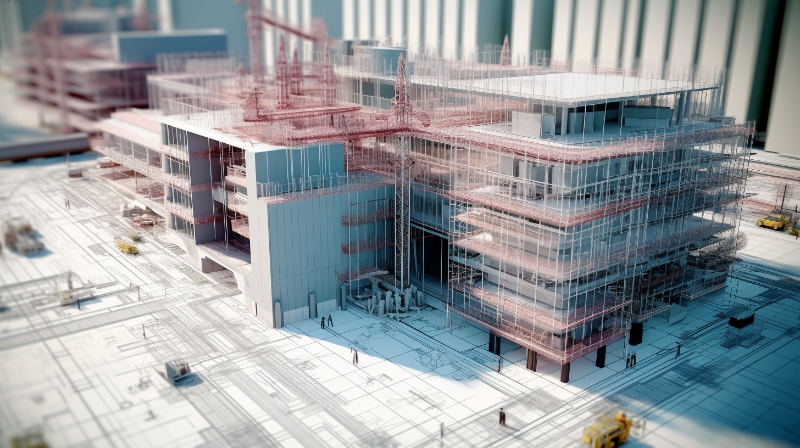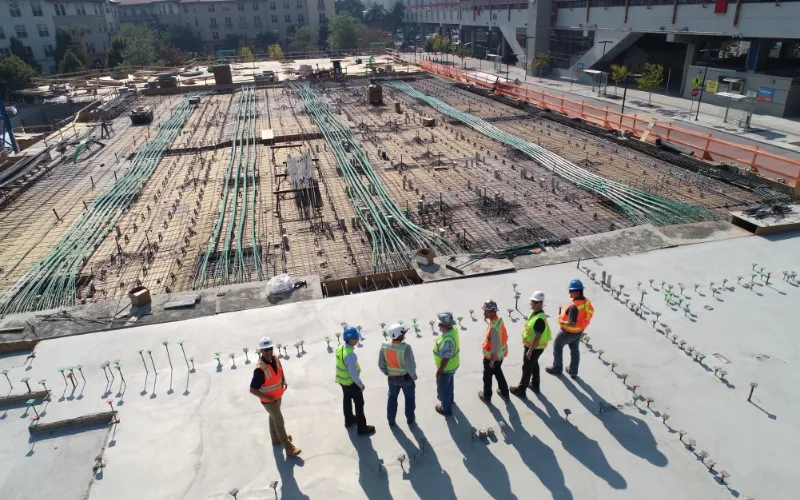As I have been teaching site managers and construction workers how to do weekly management, I have noticed that most sites use a schedule printed on a wall on the site.
These static schedules can lead to some issues in practice: They are often planned weeks in advance without mentioning exactly where and when the work should happen. As a result, the schedule rarely has much to do with what is happening on the site, and work doesn’t start as initially planned. That can cause tension and misunderstandings between the contractors.
Clear scheduling and effective communication around it are essential for building trust on the site. Subcontractors need to be confident that their crew has consistent work and that the work requirements are fulfilled beforehand. Simultaneously, general contractors need to be sure the subcontractors have workers available when needed and that tasks will be completed on time.
This requires creating and managing construction schedules with the same readiness levels as the actual site. The schedule should act as a guiding tool that helps you manage the weekly tasks on the site.
Let’s go through how to create a weekly schedule that works as a guidance for all project contributors and helps you manage the site effectively.
What are the different types of schedules in a construction project?
Let’s start by clarifying all the different types of schedules for a construction project.
Construction scheduling is split roughly into three separate schedules:
1) Contractual Master Schedule
2) Internal Master Schedule
3) Phase and Weekly Schedule
They all have different functions during the project.
Contractual Master Schedule
This schedule promises the developer when and how the project will be completed. Once this schedule has been made, it can’t be changed as it is a binding agreement. The only modification done to this schedule is updating the readiness levels of the site to share the progress. Usually, they are reported monthly during construction site meetings.
Internal Master Schedule
The role of the internal master schedule is to set goals and deadlines for the project. This schedule is more detailed and more ambitious than the contractual master schedule. Once this schedule is ready, it won’t be modified. Schedule readiness levels are updated weekly.
Phase and Weekly Plan
Building this schedule starts by duplicating the internal master schedule. This way, the goals and deadlines act as a basis for our task-level planning. The aim is to have as accurate description as possible of the tasks that need to be completed during next week.
This schedule should be built with the subcontractors and checked and iterated daily. This iterative scheduling allows you to plan site activities on a very specific level.
How to create a weekly schedule and routines that increase site efficiency?
To get started, you must first set up some basic parameters in the schedule:
- Take the schedule to a schedule management software like Sitedrive, where it can be easily managed and tracked.
- Add the locations where the work is done. The more specific the place, the more accurate the schedule, and the better the construction flows. Be as precise as possible: can you use apartments or different spaces instead of full floors?
- Assign a responsible team for each work phase. This can be a subcontractor or the general contractor’s team. The main reason for this is to set clear responsibilities and to be able to communicate them to the site managers and foremen.
- Set communication routines. Book internal weekly meetings and subcontractor meetings to the calendar and ensure everyone sticks to them throughout the project (this is usually the hardest part).
What is the best way to make a weekly schedule? Let’s take a closer look at the different steps that should be included in your weekly planning routine. ⬇️
Step 1: Start with a collaborative weekly planning
Weekly planning is a method that ensures all contributors know what the goal is for next week and what they need to get done to get there.
Next week’s weekly planning should always be done at the last possible moment, during the previous week, to create more flexibility on the schedule. All planned tasks need to happen within the week, meaning that one work package can take a maximum of 5 days to complete. If something doesn’t get done during the week, it needs to be rescheduled for the next.
Remember that the internal master schedule is the guiding tool that sets the pace and defines the deadlines for the weekly plans.
Step 2: Arrange internal weekly meetings on the site
This is the meeting where site managers share the weekly plan and discuss the readiness levels of the tasks. This usually happens on Thursdays. Before this meeting, between Monday-Thursday, site managers should have set out next week’s tasks with subcontractors.
The picture below shows how the site managers discuss tasks together. The responsible site manager shows the schedule on the screen and marks each task’s progress and readiness levels in the Sitedrive App.
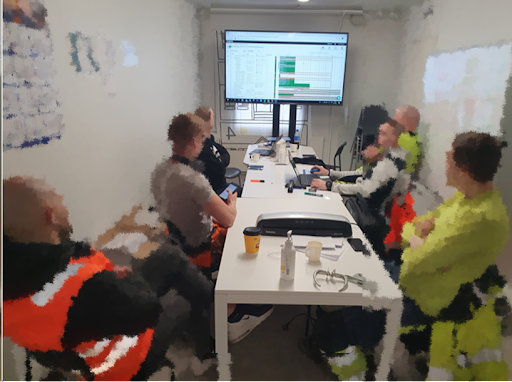
Step 3: Arrange weekly subcontractor meetings
In this meeting, the responsible site manager presents the schedule to the subcontractors to ensure everyone is on the same page about what happened and what will happen next. The plan is locked down together.
Tasks that were not finished for some reason are rescheduled to be done the following week.
This meeting is usually also booked for Thursdays.
The responsible site manager should confirm all meetings have a transparent structure, for example:
- Going through the previous tasks to see if they were finalized as planned.
- Rescheduling tasks that were not done to keep the schedule up to date.
- Discussing and reacting to obstacles that might prevent or slow down finalizing the planned tasks.
- Checking next week’s plan together to make sure everyone agrees to it.
- Ensuring all tasks have a responsible team and a manager.
- Ensuring there are no overlapping tasks in the same spaces simultaneously.
- Notifying and reacting to dependencies between tasks.
Step 4: Publish the Weekly plan for everyone to see
After the previous steps, the person responsible for the schedule publishes it for the next week. The schedule should be located in software where everyone can view it in real time.
In all simplicity, weekly planning is a continuous process that keeps everyone involved and on time. It’s important to stick to the weekly meetings and keep repeating the process every week, even when there are no tasks to discuss: something always comes up in these meetings that should be gone through together. It can be, for example, obstacles that hinder the work or some overlapping with the work tasks of different subcontractors.
Usually, the control is lost on the most critical part of the project – the indoor phase. This happens due to the lack of communication and clear common goals. If the management doesn’t establish a weekly routine at the beginning of the project and stick to it, it will be hard to try to catch up to it during the indoor phase: it is fast-paced, stressful, and it’s the stage where there are the most workers on the site.

Criteria for a good weekly plan
- No task can happen in the past. If something doesn’t get done as planned, it needs to be rescheduled for the next week.
- All tasks need to have a responsible team or Site Manager.
- Weekly plans need to live in software so they stay up-to-date and are visible to everyone. Papers, excels, or documents living on someone’s hard drive lead to multiple schedules and loss of control.
- In the best case scenario the weekly schedule and the general schedule sync in together. When readiness levels are updated to the weekly schedule, they are saved directly to the general schedule as well. This way you don’t have to update information in multiple places.
Are you ready to take your weekly scheduling to the next level?
Sitedrive is schedule management software that helps you create great routines for your site. You can plan and manage all your schedules in Sitedrive and have one view of your site’s tasks and progress.
